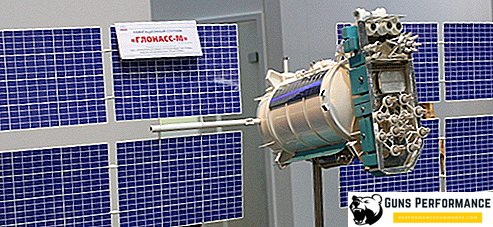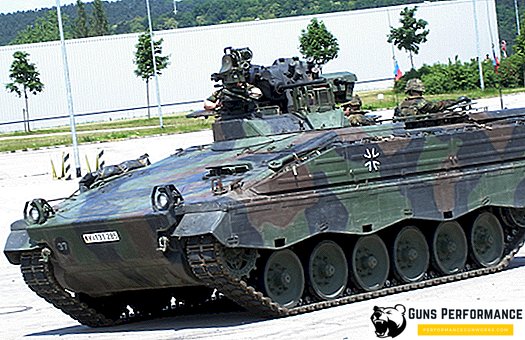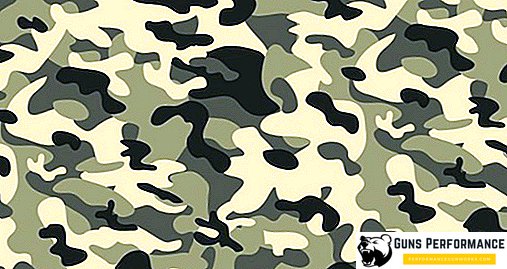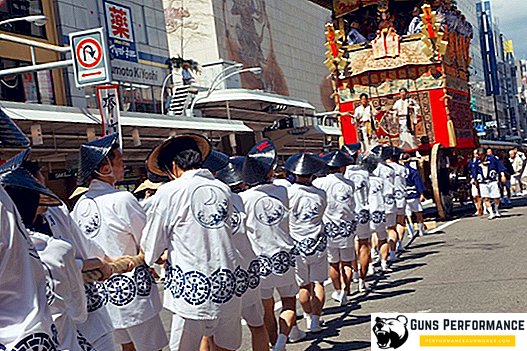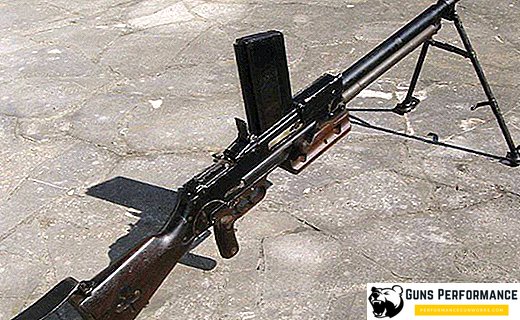Aircraft refueling in the air is one of the most difficult tasks that modern aviation pilots have to perform. However, the benefits offered by such an operation outweigh the risks and additional costs.

The range of the aircraft was one of the most important characteristics since the appearance of the first aircraft. Refueling aircraft in the air can significantly increase this important parameter. Or you can increase the payload mass of the aircraft, while maintaining the required range. Using additional refueling in the air, you can reduce the length of the runway, by reducing the weight of the fuel of an airplane taking off and reducing its take-off weight.
Background
All of the above benefits were evident at the dawn of aviation. Therefore, the first attempts to do this were undertaken before the First World War. But due to the imperfections of the then aviation technology and the great complexity of this operation, refueling in the air did not spread.
Fuel transfer was carried out in the following way: two aircraft at low speed were connected by a hose, through which fuel flowed from another plane above to another machine under the action of gravity. Then they began to include pumps in the refueling system, which significantly accelerated the process.
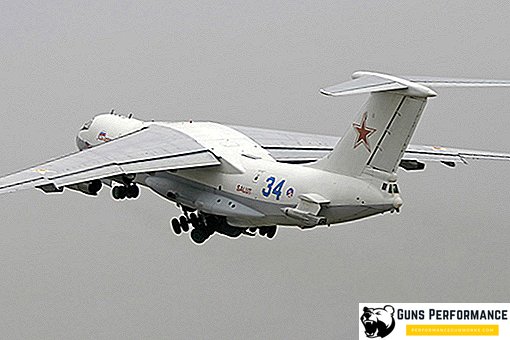
German designers worked actively in this direction during the war. With the help of additional refueling in the air, they planned to increase the range of their bombers, hoping to reach the territory of the United States. For the first time, Americans began to massively use refueling in the air.
In the Soviet Union, experiments with air refueling began in the 30s of the last century. The reconnaissance aircraft R-5 was re-equipped. However, further experiments then it did not go.
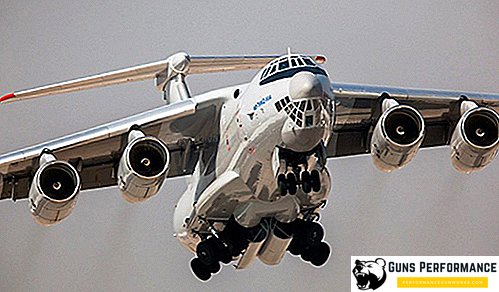
Airborne refueling technology began to develop rapidly during the Cold War. One of the main shock forces of the opposing sides in the future global conflict should have been strategic bombers - carriers of nuclear weapons. These aircraft carried constant duty, patrolling certain areas and continuously being in the air for a considerable amount of time. It is for these machines actively used air refueling. The main Soviet strategic bomber Tu-4 without refueling could not reach the territory of the United States - the main enemy of the USSR.
In the USSR, several specialized tanker aircraft were created, but by the mid-1970s they were all considered obsolete. A new plane was required. Its development was engaged in the Ilyushin Design Bureau. The specialists of this bureau have already had some groundwork on this topic. Back in 1968, the design bureau was developing a "flying tanker", but then the technical characteristics of the aircraft did not suit the customer.
In the early 80s, the question of a new aircraft tanker rose very sharply. The USSR Air Force was armed with Tu-95MS, MiG-31 and Su-24M aircraft, which could be refueled in the air. In addition, the planned appearance of another "strategist" - the Tu-160 and the latest fourth-generation aircraft - the Su-27 and MiG-29. "Potential customers" of the new machine could be several thousand aircraft.
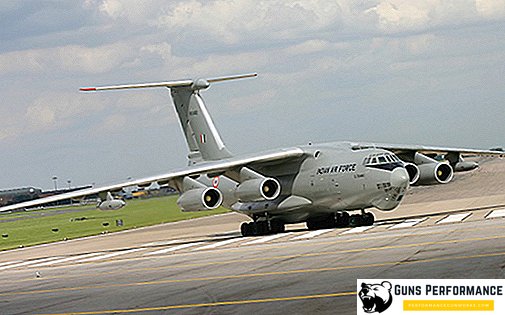
It was at this time, at the right time, that a new modification of the newly created Il-76 transport aircraft appeared. The IL-76MD had a high MVM (maximum take-off weight), which made it possible to increase the volume of fuel transmitted during refueling. The new aircraft was assigned its own IL-78 index, and already in the middle of 1983, the first IL-78 took off.
Another event occurred that had a direct impact on the creation of a new tanker aircraft. In 1983, the NGO Zvezda created a unified overhead refueling unit (ORP), which was perfectly suited for tanker aircraft and installed on different types of vehicles.
Until 1991, 45 Il-78 tankers were produced, and later six more aircraft were made for the Indian Air Force.
Description
The IL-78 was developed based on a modification of the IL-76, which had a maximum take-off weight of 190 tons. Two cylindrical tanks of 14 tons each were installed in the aircraft fuselage. On the plane were installed fire safety systems.
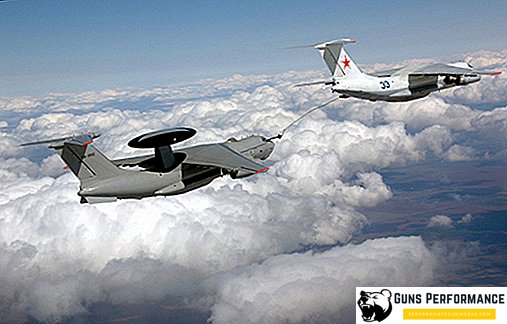
The main feature of the new machine was the opportunity to work not only with long-range aircraft, but also to fill the front-line aircraft and air defense aircraft. This became possible due to the installation of three UPAZ-1 devices on the IL-78. One of them was located in the aft fuselage and two more were on the wings.
Usually, one strategic bomber or transport aircraft was refueling through a stern ORM or two front-line aircraft through ORMs mounted on wings.
The ORM was a container with a turbo pump and a hose wound into a drum with a length of 28 meters.
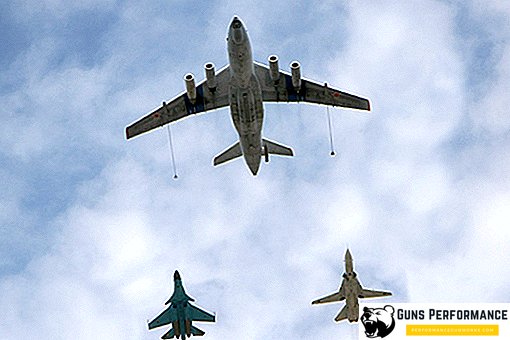
Also, the IL-78 could work as a tanker for the transport of hot. The unloading of fuel on the ground took place without the participation of UPAZ. The technical characteristics of the IL-78 allowed it to transfer up to 65 tons of fuel at a distance of 1000 kilometers.
This plane could still be used as a transport. The fuel tanks, located inside the fuselage, were made removable. Also the cabin was provided with loading equipment. However, for the transportation of goods IL-78 was used extremely rarely.
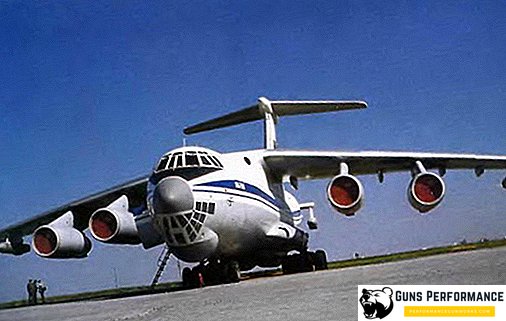
Technical characteristics of IL-78
| Modification | IL-78 |
| Wingspan, m | 50,50 |
| Aircraft length, m | 46,59 |
| Airplane height, m | 14,76 |
| Wing area, m2 | 300 |
| Weight, kg | |
| empty aircraft | 40000 |
| maximum takeoff | 190000 |
| Internal fuel, l | 82000 |
| engine's type | 4 TRD D-30KP |
| Thrust, kgf | 4 x 117.68 |
| Maximum speed, km / h | 850 |
| Cruising speed, km / h | 800 |
| Refueling speed, km / h | 400-600 |
| Practical range, km | 7300 |
| Range of action, km | 3650 |
| Practical ceiling, m | 12000 |
| Crew | 6 |
| Payload: | Maximum load - 65,000 kg of fuel |
| Fuselage tanks - 28,000 kg of fuel |


